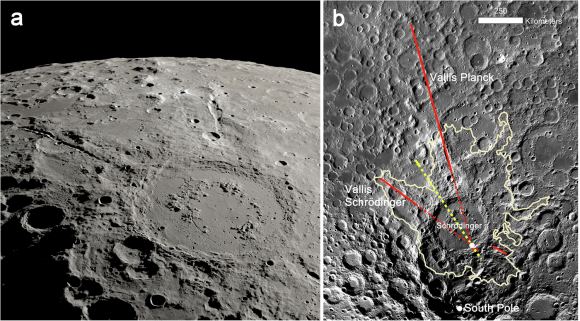The Moon has Two Grand Canyons, Carved in Minutes by an Asteroid Impact
Our Moon continues to surprise us with amazing features. Scientists recently shared new information about two canyons that branch out from a major lunar impact. The site is the Schrödinger basin near the Moon’s South Pole. It formed when an asteroid or possibly even a leftover planetesimal slammed into the surface. It took only minutes … Read more
